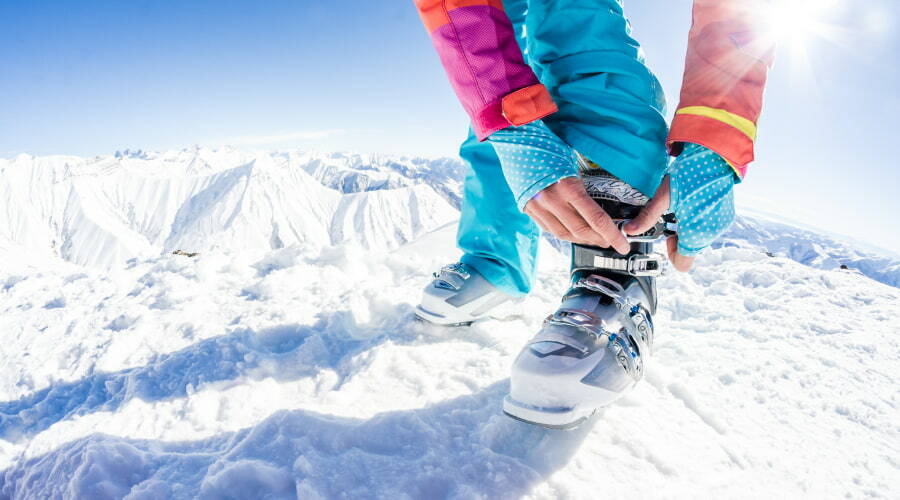
Skiing is a quintessential New Hampshire pastime, an exhilarating sport that combines the thrill of speed with the breathtaking beauty of the White Mountains. For many Granite Staters and visitors alike, it’s an activity steeped in tradition, a passion that cultivates years of memories formed on the crystal-clear slopes of Mount Washington and other iconic peaks. However, like any sport, skiing on New Hampshire’s rugged terrain comes with its set of risks, and injuries are not uncommon, especially when tackling the challenging trails of Cannon Mountain or navigating the tree-lined paths of Bretton Woods. By understanding the most common ski injuries and learning how to prevent them, enthusiasts can safeguard their experience on the slopes and continue to enjoy the unmatched winter charm of New Hampshire.
Understanding the Risks: Common Ski Injuries
To carefully mitigate the risks of skiing, it’s essential to understand the types of injuries that most frequently occur on the slopes. While various factors can lead to injuries, let’s explore some of the most common ski injuries:
Knee Ligament Injuries
A tear to the anterior cruciate ligament (ACL) is a frequent injury in skiing, often caused by a sharp twisting motion, such as catching an edge. Symptoms include immediate pain, swelling, and instability in the knee.
Skier’s Thumb
Skier’s thumb is the colloquial name for a torn ulnar collateral ligament (UCL) in the thumb, usually from falling while gripping a ski pole. This injury is characterized by pain at the base of the thumb and difficulty holding objects.
Fractures
Fractures can happen in any part of the body, but the most common fractures in skiing occur in the lower extremities, particularly in the legs and the upper body, in the form of shoulder or collarbone fractures.
Head Injuries
Head injuries can range from mild concussions to severe traumatic brain injuries, typically the result of high-speed crashes without proper helmet use.
While these injuries are unfortunately a part of the ski world, knowing the risk factors and taking preventive measures can significantly reduce the chances of accidents.
How to Prevent Ski Injuries
Prevention is always the best strategy when it comes to personal safety. Here are some tips on how to avoid common ski injuries:
Proper Gear and Checkups
Ensure your ski equipment, including bindings, is in good working order. Skis that do not release properly can increase the risk of serious injuries, so it’s important to have them professionally maintained and adjusted. Additionally, invest in high-quality protective gear, especially a well-fitted helmet.
Ski with Control
Always ski within your ability and under control, prioritizing safety above all else. Be mindful of your speed, particularly in areas where slopes are crowded or the terrain is hard-packed. Remember, maintaining control not only enhances your enjoyment of the sport but also reduces the risk of accidents or collisions with other skiers. Additionally, it’s crucial to be aware of the varying degrees of difficulty on different trails and to ski within your “skill level’s bounds.” For instance, if you’re still mastering the basics and just graduating from the bunny slope, it’s advisable to steer clear of advanced trails such as moguls or black diamonds until you feel more confident and experienced. By gradually progressing and challenging yourself within your limits, you can ensure a safer and more fulfilling skiing experience.
Take Skiing Lessons
Proper technique is key to avoiding injuries on the slopes. Taking skiing lessons from a certified instructor can not only improve your skills but also teach you how to fall safely.
Warm Up and Stay Fit
Prepare your body for skiing with a proper warm-up routine. Focus on exercises that build leg strength, such as squats and lunges, to help withstand the demands of skiing. Maintaining overall fitness is also crucial to reduce the risk of fatigued muscles and potential accidents.
Be Weather-Smart
Be aware of changing weather conditions, which can affect the quality of the snow and visibility. Always ski with appropriate layers for warmth and visibility, and know when to call it a day if conditions become dangerous.
Know the Rules of the Mountain
Familiarize yourself with the skier responsibility code, which outlines common-sense rules for ski safety and etiquette. Along with the rules of the mountain, be cognizant of your surroundings. It’s crucial to not only understand and abide by the established guidelines but also to be aware of potential hazards and other skiers around you. While it’s best to dress appropriately for the elements, ensure that those articles of clothing aren’t interfering with your ability to perceive what’s around you properly, such as utilizing peripheral vision. Following these guidelines not only keeps you safe but also helps ensure the safety of others on the slopes.
Pay Attention to Pain
If you experience pain while skiing, don’t push through it. Stop skiing and rest. Continuing to ski with an injury can lead to further complications and jeopardize your safety.
Stay Hydrated and Fueled
Since skiing is a physically demanding activity, dehydration and fatigue can occur leading to loss of concentration and poor decision-making. Drink plenty of water and eat nutritious snacks to keep your energy levels up.
Post-Injury Considerations
Despite the best precautions, accidents can still occur. It’s important to know what to do in the event of an injury. If you’re injured while skiing, especially if you suspect a break or other serious injury, don’t delay seeking medical help. Prompt treatment can make a significant difference in recovery. Allow your body time to heal before returning to skiing. Depending on the severity of the injury, this could take several weeks or even months. Engage in the rehabilitation process as advised by your healthcare provider to fully recover and strengthen any weakened areas.
Balancing Risk and Reward in Skiing
Skiing, like any adventure sport, presents a risk-reward proposition. The exhilaration of gliding on snow and the breathtaking panoramas are balanced against the potential for injury. By being aware of the common risks, approaching the sport with respect, and taking proactive steps to protect yourself, you can continue to enjoy the slopes with a greater sense of personal safety. Remember, the most satisfying runs are those where you’re not just chasing the thrill but also skiing smart.
How Access Sports Medicine Can Assist
Whether you want to prevent skiing-related injuries or need expert care to recover after an accident, Access Sports Medicine is here to support your journey toward optimal health both on and off the mountains. If you find yourself dealing with an injury, don’t let it escalate. Reach out to us for expert care that will help you return to your peak performance. Don’t let injuries leave you out in the cold; our team is ready to assist you in skiing the path to recovery. Contact us to schedule an appointment and let’s work together to create a health plan tailored to your needs.


